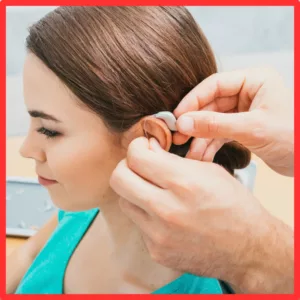How Much Do Hearing Aids Cost?
If you’re considering hearing aids, you’re probably wondering, “How much do hearing aids cost?” The answer depends on several factors, from the technology in the hearing aids to the services included. In this article, we’ll explore the different price points, what’s included in the cost, and how to save money on your purchase.
Understanding Hearing Aid Costs
Hearing aids come in various models with different features. Basic models cost less, while premium models offer advanced technology and more features.
Factors That Influence Hearing Aid Costs
Several factors contribute to the overall cost of hearing aids. Understanding these factors will help you make an informed decision when purchasing the right hearing aids for your needs.
1. Technology Level
The technology inside hearing aids plays a significant role in determining their cost. Basic hearing aids provide essential amplification, making them suitable for those with mild to moderate hearing loss. These models focus on amplifying sounds without many extra features, and they are typically more affordable.

However, premium hearing aids offer much more than just amplification. They are equipped with advanced features such as:
- Bluetooth Connectivity: This allows users to connect their hearing aids directly to smartphones, tablets, and televisions. With Bluetooth, users can stream phone calls, music, and other audio directly to their hearing aids, offering greater convenience and flexibility.
- Noise Reduction and Directional Microphones: Premium models come with sophisticated algorithms that filter background noise and focus on speech, which is especially helpful in noisy environments like restaurants or social gatherings. These hearing aids can automatically adjust to different listening environments, enhancing sound clarity and comfort.
- Artificial Intelligence (AI): Some high-end hearing aids use AI to learn your preferences and automatically adjust settings based on your environment and past listening behaviors. This offers a highly personalized listening experience.
- Rechargeable Batteries: Advanced models often come with rechargeable batteries, eliminating the need for regular battery replacements and offering up to 30 hours of use on a single charge.
The more advanced the technology, the higher the cost. However, for individuals with active lifestyles or complex listening environments, investing in premium features can significantly improve their quality of life.
2. Included Services
The cost of hearing aids usually includes more than just the devices themselves. Many providers bundle essential services with the purchase of hearing aids, which can influence the overall price. Here’s what’s typically included:
- Hearing Tests: A comprehensive hearing evaluation is often included to assess the degree and type of hearing loss, which is critical in selecting the right hearing aid.
- Fitting and Customization: Hearing aids need to be tailored to the user’s ear shape and hearing profile. This process involves taking physical impressions of the ear (for custom devices) and programming the hearing aids based on the audiogram results. The initial fitting ensures the hearing aids are comfortable and work optimally for the user’s specific hearing loss.
- Follow-Up Appointments: Adjusting to hearing aids takes time, and follow-up visits are necessary to fine-tune the devices. These appointments ensure that the hearing aids are performing as expected in real-world environments, like noisy restaurants or quiet settings. Bundled service models often include unlimited follow-up appointments for a set period, which provides valuable long-term support without additional costs.
- Maintenance and Repairs: Regular maintenance helps keep hearing aids functioning at their best. Many providers include periodic cleanings and check-ups as part of the bundled service. Additionally, if repairs are needed within the warranty period, they are typically covered, which saves money in the long run.
- Warranty and Support: Most hearing aids come with a warranty that covers repairs or replacements due to defects. Some providers offer extended warranties as part of their service package, adding value and peace of mind.
While these bundled services may increase the upfront cost, they provide essential support that ensures your hearing aids work effectively over time. Without these services, you may face additional out-of-pocket costs for each follow-up visit or repair.
3. Brand
The brand of hearing aid you choose can also affect the price. Leading brands such as Phonak, Starkey, ReSound, and Oticon are known for offering cutting-edge technology, innovative features, and high-quality performance. These brands invest heavily in research and development to improve sound quality, comfort, and durability.
- Phonak: Known for its wide range of hearing aids, Phonak offers models with advanced features such as speech enhancement, noise reduction, and seamless Bluetooth connectivity. Their premium devices often cater to those with complex hearing needs and come with a higher price tag.
- Starkey: Starkey hearing aids are recognized for their innovative use of AI and health-tracking features. Some models include heart rate monitors, fall detection, and brain health tracking, offering more than just hearing support. These advanced functionalities contribute to the higher cost.
- ReSound: Specializing in hearing aids with excellent wireless capabilities, ReSound hearing aids are often favored for their ability to connect with various devices, including iPhones and Android phones. Their premium models offer features like spatial awareness and wind noise reduction.
While leading brands tend to cost more, they offer a level of reliability and innovation that can be worth the investment, especially for users with more demanding hearing needs.
4. Hearing Loss Severity
The severity of your hearing loss is another critical factor in determining the cost of hearing aids. Individuals with mild hearing loss can often use basic models with simple amplification and fewer features. These devices are usually more affordable and may meet the needs of someone who mainly struggles in specific listening environments, such as conversations in noisy places.
However, those with moderate to severe hearing loss may require more advanced devices. Hearing aids designed for severe hearing loss need to amplify a wider range of frequencies and provide stronger output. These hearing aids often come with additional features such as:
- Advanced Feedback Management: This technology prevents the whistling or feedback that can occur when sounds are amplified too much.
- Multiple Listening Programs: These allow users to switch between different settings depending on their environment (e.g., quiet home, noisy office, outdoor settings).
- Telecoil Functionality: Telecoil-enabled hearing aids are a must for users who frequent venues with hearing loops (such as theaters or churches). These aids pick up signals directly from the loop system, delivering clear sound without background noise.
Severe hearing loss often requires more sophisticated technology and customization, which can increase the cost of the devices. However, investing in the right hearing aids can significantly improve communication and overall quality of life for those with profound hearing challenges.
What’s Included in the Cost of Hearing Aids?
When buying hearing aids, it’s essential to understand what’s included in the price. Most hearing aids come bundled with services that help you adjust and maintain your devices over time. Here’s what you can expect:
- Hearing Test: A thorough hearing evaluation is often included to ensure the hearing aids meet your needs.

- Fitting and Programming: Hearing aids need to be fitted to your ears and programmed for your specific hearing loss.
- Follow-Up Appointments: Many providers offer unlimited follow-up appointments for a set period to fine-tune your hearing aids.
- Warranty: Most hearing aids come with a warranty that covers repairs or replacements for up to three years.
- Free Batteries or Charging Station: Some hearing aids come with a year’s supply of batteries or a charging station if they’re rechargeable.
Bundling these services with your purchase ensures you get the support you need for successful hearing aid use.
Unbundled vs. Bundled Hearing Aid Costs
Some providers offer an unbundled pricing model, where you only pay for the hearing aids themselves, and services are separate. This can reduce the upfront cost but may increase overall expenses if you need many follow-up appointments. On the other hand, bundled pricing includes all necessary services in the price, giving you peace of mind.
Pros and Cons of Bundled Pricing
- Pros: All services are included, allowing you to access support whenever needed without additional costs.
- Cons: The upfront cost may seem higher, even though it covers all services.
Pros and Cons of Unbundled Pricing
- Pros: You pay only for the services you need, which may lower the initial cost.
- Cons: Additional appointments and services can add up over time, potentially costing more than bundled pricing.
Ways to Save on Hearing Aids
While hearing aids can be expensive, there are ways to reduce the cost without sacrificing quality. Here are a few strategies:
- Health Savings Accounts (HSA) or Flexible Spending Accounts (FSA): These accounts allow you to pay for hearing aids with pre-tax dollars, reducing the overall cost.
- Insurance Coverage: Check if your insurance plan covers hearing aids. Some Medicare Advantage plans offer hearing aid benefits.
- Payment Plans: Many providers offer financing options that allow you to pay for your hearing aids over time.
Find out more about buying hearing aids without insurance.
Why the Investment in Hearing Aids is Worth It
Investing in hearing aids offers much more than just improved hearing. For many, the benefits extend far beyond sound amplification, touching nearly every aspect of daily life. Here’s why hearing aids are a valuable investment for both your health and overall well-being.
1. Improved Communication and Relationships
Hearing aids help you re-engage in conversations with loved ones, friends, and coworkers. When hearing loss goes untreated, it often leads to misunderstandings and frustrations, which can strain relationships. Hearing aids restore your ability to hear speech more clearly, making communication easier and more enjoyable. This improved communication fosters stronger connections with those around you, reducing feelings of isolation and frustration.
2. Enhanced Cognitive Function
Research shows a strong link between untreated hearing loss and cognitive decline. When the brain has to work harder to interpret unclear sounds, it can lead to cognitive overload, which may contribute to memory problems and a faster rate of cognitive aging. Hearing aids ease the strain on the brain by providing clear sound input, allowing your brain to process sound without unnecessary effort. This helps maintain cognitive health and may even reduce the risk of dementia.
3. Reduced Social Isolation
Untreated hearing loss often leads to social withdrawal, as individuals may find it difficult or embarrassing to participate in conversations or social events. Over time, this isolation can lead to loneliness and depression. Hearing aids restore your confidence in social situations, enabling you to engage in group settings and enjoy interactions without constantly worrying about missing out on conversations. By staying socially connected, you can maintain a higher quality of life and emotional well-being.
4. Better Mental Health
Hearing loss can take an emotional toll, leading to frustration, anxiety, and even depression. The constant effort to hear can cause stress, and the fear of missing out on conversations can lead to feelings of embarrassment or inadequacy. Hearing aids can alleviate much of this stress by making conversations more natural and less strenuous. This can lead to improved mental health, a boost in self-esteem, and greater peace of mind.
5. Increased Safety and Awareness
Hearing is essential for staying aware of your surroundings. Everyday sounds—like approaching vehicles, alarms, or someone calling your name—are crucial for your safety. Untreated hearing loss diminishes your ability to detect these sounds, potentially putting you at risk. Hearing aids restore auditory awareness, helping you stay more alert and responsive to your environment. This increased awareness can improve your safety, both at home and in public settings.
6. Enhanced Work Performance
Hearing loss can affect job performance, especially in roles that require frequent communication or interaction. Misunderstandings due to poor hearing can lead to mistakes, lower productivity, and even missed career opportunities. Hearing aids ensure you can participate fully in meetings, phone calls, and discussions, boosting your confidence and enabling you to perform at your best. Many users find that their job performance improves significantly after they begin using hearing aids, which can lead to career growth and better professional relationships.
7. Long-Term Cost Savings
While hearing aids may seem like a significant upfront expense, they can actually save you money in the long run. Untreated hearing loss is associated with higher healthcare costs, including more frequent doctor visits, hospitalizations, and an increased risk of falls and other accidents. Additionally, addressing hearing loss early can prevent further deterioration, reducing the need for more expensive medical interventions down the line. By investing in hearing aids, you can maintain your overall health, potentially saving on future medical bills.

8. Improved Quality of Life
The ability to hear well enhances your overall quality of life. Whether it’s enjoying music, listening to birds sing, or hearing the laughter of children, hearing aids bring back the sounds that make life rich and fulfilling. Many users report feeling more engaged, happy, and confident after they begin wearing hearing aids. This restored sense of connection to the world around you can greatly improve your day-to-day experiences and overall happiness.
If you’re ready to explore your options, call American Hearing + Audiology to right hearing aid at a price that works for you.



